
Creating Winning Combinations with Kyle King
Blog
Creating Winning Combinations with Kyle King
The name Kyle King is synonymous with winning show jumping combinations. Kyle is consistently jumping at the highest level of the sport and catapulted up the world rankings last year while successfully campaigning his main four Grand Prix horses. We asked Kyle how he creates winning combinations and about moving horses up a level in the sport. The insights he provided are applicable to riders at any level.
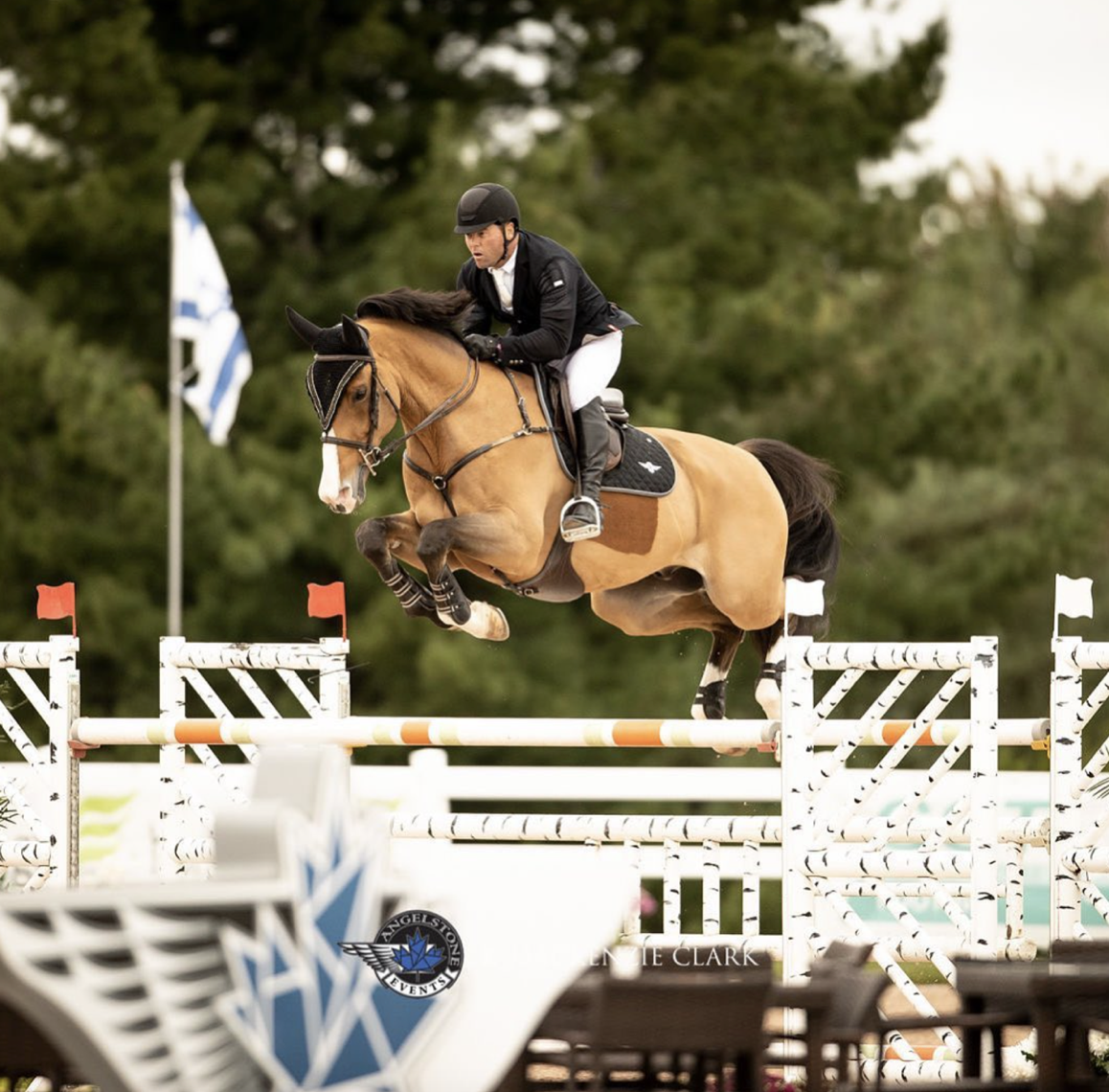
Enzo and Kyle on their way to a double clean at a 5* Grand Prix event. Photo: Mackenzie Clark
Kyle was born into the equestrian business – his father was a professional with a training and sales business. “At 12 or 13, I was catch riding ponies and being a little pro already,” he recalls. “I rode horses that were tougher but got miles in the ring. I had a sales business with my dad through high school.” At age 16, he was working for equestrian Doug White, and went up to Spruce Meadows at age 17 and qualified for the million-dollar class.
Much of Kyle’s career was shaped by working with his father, other professionals, and riding horses. He uses the same principles today that he applied with his father. “We focus on making horses better and finding them homes. We give our horses confidence and make sure they are sound and fit.”
The Horses
Kyle is currently partnering with four main Grand Prix horses, all are winning and consistently performing at their highest level. The horses are Enzo, Etalon, Coffee To Go, and Magic Mike.
- Enzo has been with Kyle the longest and was Richard Keller’s horse before he passed away two years ago. He competes in Grand Prix and team competitions, and while not the fastest horse, is amazingly consistent each time he enters the ring.
- Etalon was supposed to be a sales horse, but continues impressing Kyle and his wife Emily, and stayed in their program instead. Kyle has ridden Etalon in team competitions, derbies, and Grand Prix events.
- Coffee To Go is owned by Spruce Meadows and is a special horse that requires a rider with finesse. Kyle has earned his trust, and the horse easily soars over the biggest jumps.
- Magic Mike is the fourth horse in Kyle’s string and is owned by Elizabeth Kilham. They are jumping the biggest Grand Prix rounds, Magic Mike doesn’t have a lot of experience yet, but is powerful with a unique way of going.
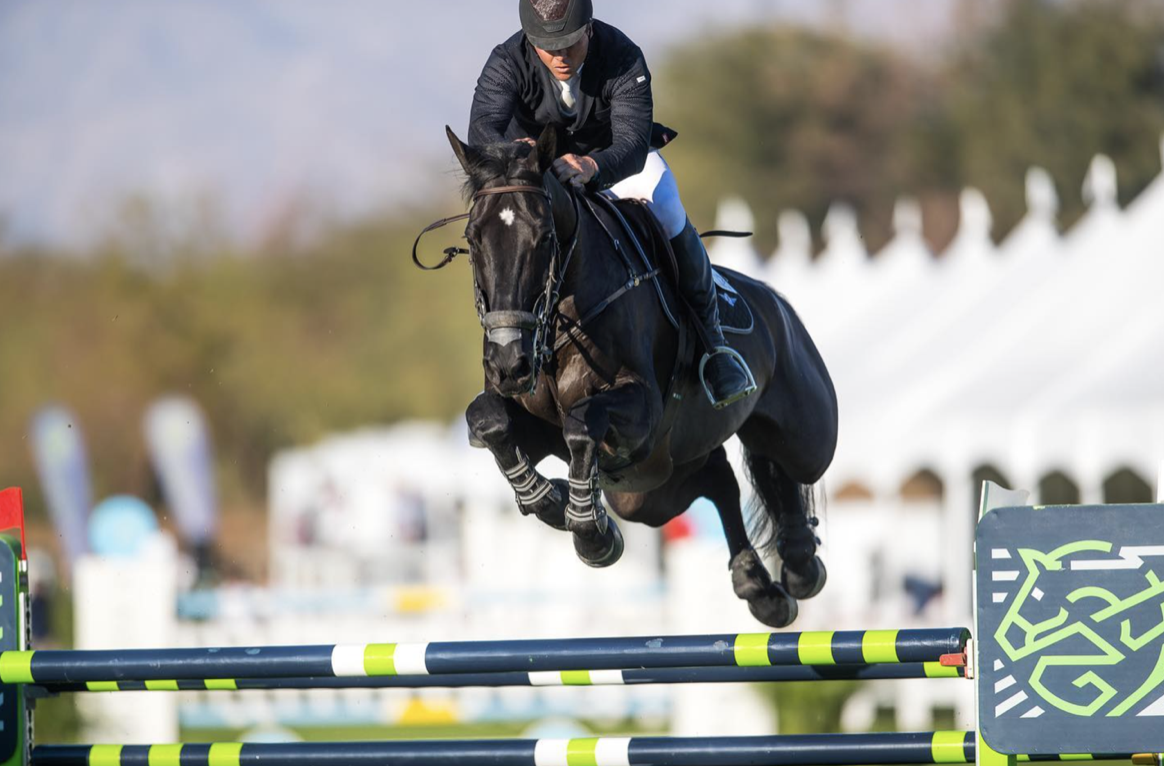
Kyle and Magic Mike. Photo courtesy of Kyle King.
“All four horses are winners in multiple events. It’s nice to have depth and space out the year, and pick where you think they’re going to be best,” Kyle says. “I climbed a lot in the world rankings last year because of that and making sure they were peaking at the right times. I got valuable points.” This strategy serves Kyle and his horses well and is one he recommends riders use whenever possible.
Training to Win
Creating a winning combination with a horse is about learning the horse’s style and preference, making sure the horse is sound and fit, making them better, and giving them confidence. The same principles Kyle applied in his youth are relevant at the highest levels of the sport.
“Listen to the horse – every one is an individual,” he says. “I used to be known as a catch rider and was a quick study. I go to the horse’s strengths and what they do well, that’s why I was a good catch rider. Then, the horse shows you where they are weaker, and you can slowly start to mold them and build their confidence with each ride and each class.”
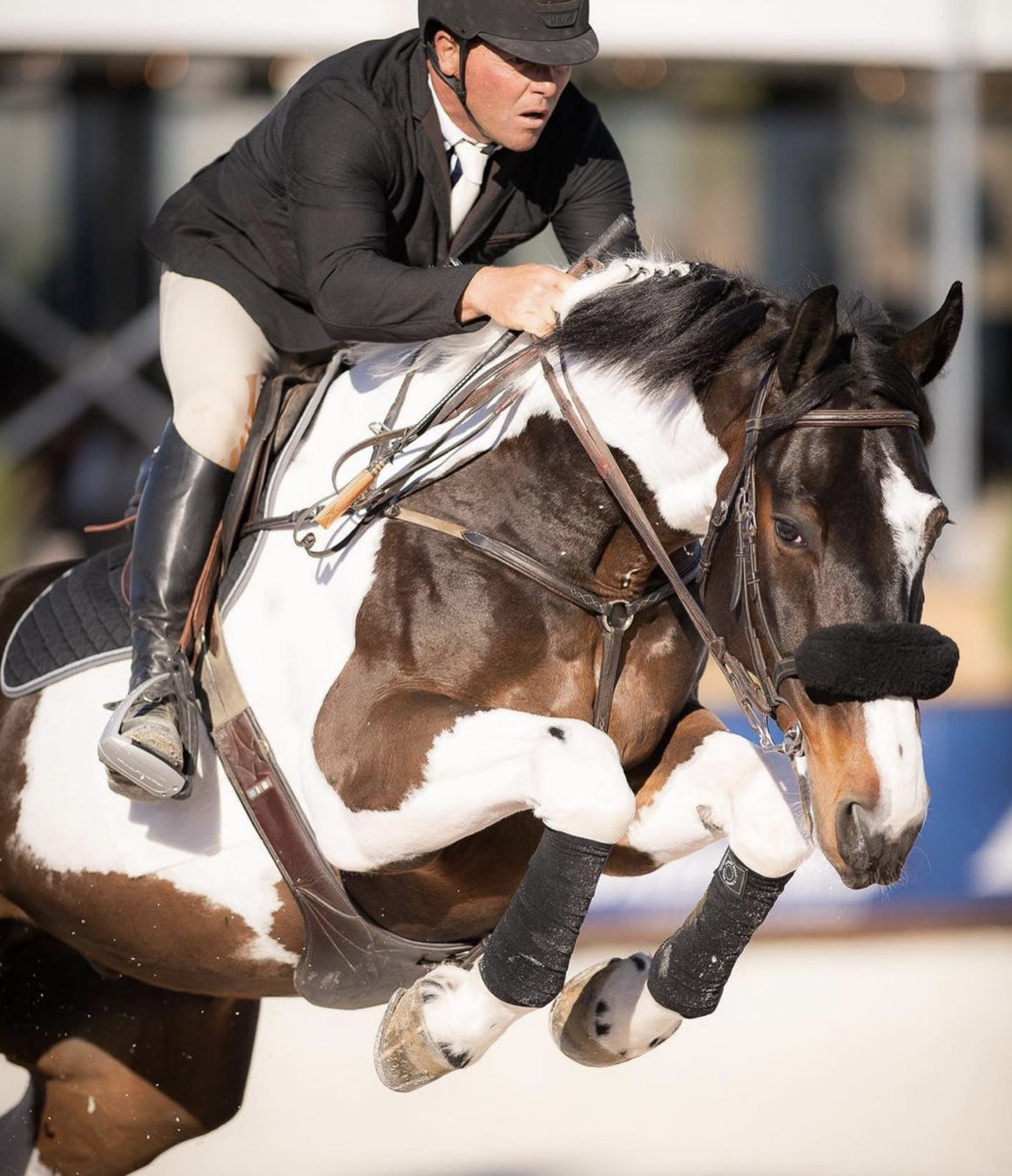
Gipsy De L’epinette and Kyle placed second behind Ittolo and Kyle at the Desert Circuit I, the $10,000 Interactive Mortgage 10 & Under Futurity Series 1.35m. Photo: Kim Gaudry
Kyle stresses the importance of feeling and trial and error in learning about the horse’s style and preference. He’s always made his own horses and ridden thousands; obviously that is an advantage in developing feel for the horse. But every rider has opportunities to ride more horses and should take advantage of these whenever possible. Each horse teaches a rider something, and further develops their feel.
“Fitness is a big part of the program,” he continues. “Get the horses into top fitness and that helps them be successful. I use natural terrain, we have the Badlands Mountain range behind our house, and I take the horses out into the mountains to work, and we’re riding in sand, and up and down the hills – that’s fitness you can’t get in a ring. The core fitness pays off as the season goes along.”
Of course, time is also spent in the ring. Kyle lunges new and young horses over jumps. It allows him to see how the horse jumps without a rider and where they naturally take off from. Other training exercises include grid work, pushing across oxers and shorter distances, V-pole exercises, and step poles to work on their shape and core. Kyle saves the big courses for the ring unless the horses have had a long break and need a full course before heading back to competition. He doesn’t create a long-term or weekly plan for each horse, and instead adapts his system that day, based on how the horse feels, and what they need.
“You really feel it and know what they need,” he adds. “We video every round we do in the ring and at home, and I go back and watch it. You feel it and then immediately see it visually while it’s still fresh in your mind, that helps with training. I watch each training and showing video at least two or three times, looking for ways to improve. My wife Emily is also on the ground and an excellent resource.”
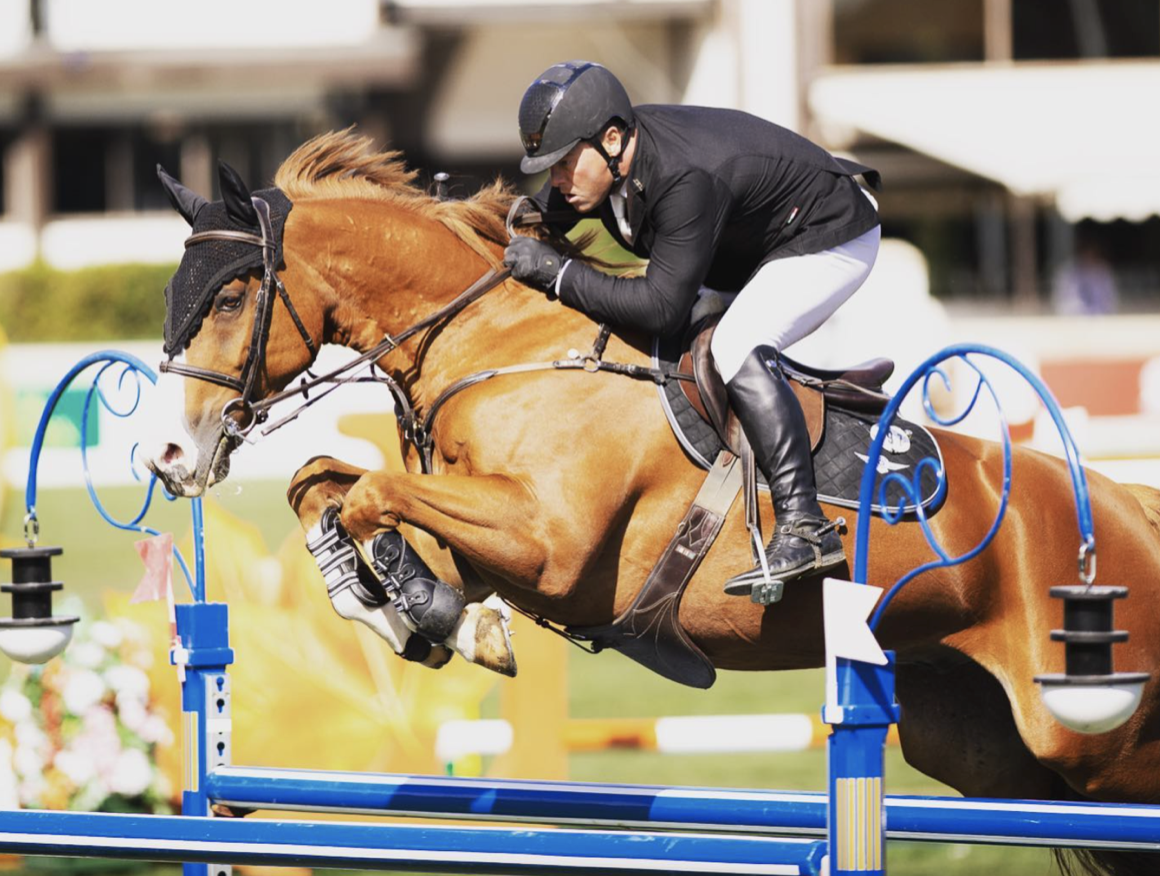
Etalon jumping in great form in a 5* 1.50m class at Spruce Meadows. Photo: Kim Gaudry
Moving Up
Once the horses are showing, it’s really about maintaining soundness and fitness, and keeping them fresh for competition. Then, riders may start to consider moving up. Again, Kyle depends on feel to determine when the horse is ready to move up.
“I feel it when they’re confident and ready,” he says. “It’s about testing them, if they are fit enough and already successful, if it feels easy, then you test and move up.”
Kyle adds that sometimes the horses need to have a test and see a bigger course of jumps to determine if they are coming to the party or not. A horse may need to learn or work on their focus, and a moving up test helps them.
Pushing or holding a horse back in the ring is also part experimentation. “If they feel safe and brave, then push the envelope, and step them up. I ride to win, the horses need to learn to be competitive, and they learn from going a little faster, the sport is meant to ride forwards.”
Developing feel and creating a winning combination isn’t something that happens overnight. Thousands of hours and rides go into developing that feel. Riders also need to willingly experiment and try things with their horse whether it’s a new division or using a faster speed. As long as the horse feels safe and brave, it can be a learning experience for both and lead to greater success down the road.
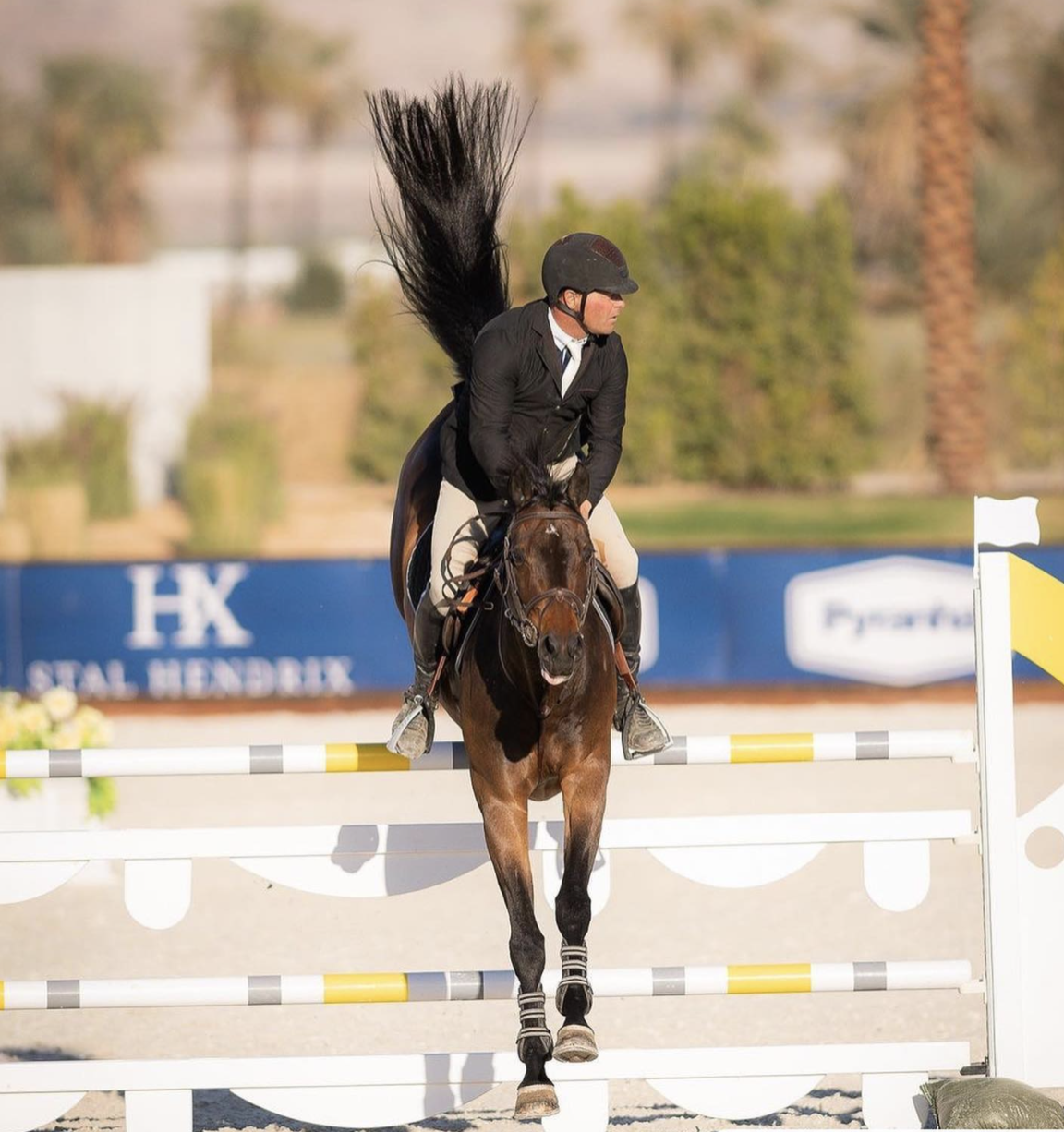
Ittolo and Kyle winning the Desert Circuit I, the $10,000 Interactive Mortgage 10 & Under Futurity Series 1.35m. Photo: Kim Gaudry
“Every horse in my barn loves what they’re doing, it’s fun for all of us,” Kyle concludes. “Nothing makes me happier than having a good day, putting the horses away, and reflecting on the day’s accomplishments. I’m lucky to do something I love.”
